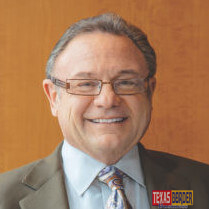
Texas Border Business
The Federal Reserve recently announced another increase in the target interest rate for federal funds to 3-3.25%. The point is to slow the economy in order to reduce inflation. It’s a balancing act of the Fed’s twin mandates – maximizing employment and keeping inflation at bay.
The pandemic required stimulative policy to keep the economy from imploding any worse than it did. The Fed decreased the fed funds rate to 0% and purchased mortgage securities to inject money into the economy, among other things. Various federal stimulus packages flooded household budgets with money to spend at a time when activities such as eating out or traveling were impossible or difficult. Once things opened up, excess cash dramatically increased demand even as COVID-19-related disruptions curtailed supply. Throw in a war in the Ukraine, a shutdown in China, a few weather disruptions, and a worker shortage, and things only get worse (at least we are not dealing with a rail strike at this point).
The most basic definition of inflation is too many dollars chasing too few goods. We’ve begun to see some improvement in the availability of goods (though there are still notable issues) but inflation remains stubbornly high. The good news is that, unlike the period in the late 1970s and early 1980s, the factors driving this inflation are not structural in nature and are not permanently baked into the system. The bad news is that the near perfect storm of factors that generated and sustained these rises is not dissipating as quickly as we would like, and liquidity and demand remain high. Some prices, such as gasoline, have notably declined and others are beginning to stabilize, but thus far it has not been enough to move the needle without the additional push from monetary policy.
In response, the Federal Reserve has morphed from sounding cautious about disrupting the recovery to asserting that below-trend economic growth is acceptable if necessary to bring inflation under control. In late August, Chair Powell stated that price stability was the focus, recognizing that the resulting higher interest rates, slower growth, and softer labor market conditions would “also bring some pain to households and businesses.” He has since reinforced that message.
There’s a legitimate sense of urgency in that if inflation becomes a perceived permanent condition, it can become a self-fulfilling prophecy. Such an outcome would make the specter of higher prices much harder to reverse.
Chair Powell has pledged to “keep at it until we are confident the job is done.” Despite some of the short-term pain, that’s good news for all of us. The last thing we need is to build a self-reinforcing pattern of inflation into the economy. We’ve been there before. Stay safe!
______________________________
Dr. M. Ray Perryman is President and Chief Executive Officer of The Perryman Group (www.perrymangroup.com), which has served the needs of more than 2,500 clients over the past four decades.















